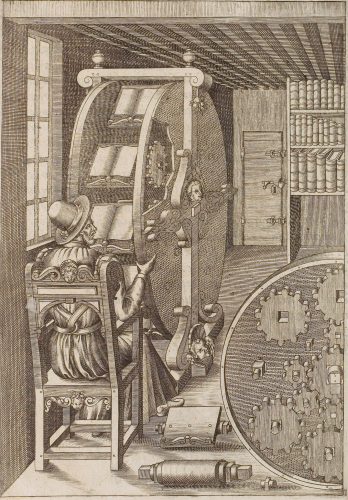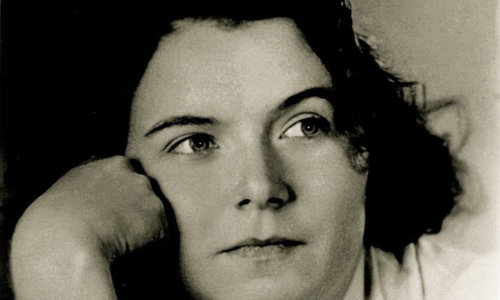Alan Turing proposed a simple test for determining whether or not a computer system possesses human-level intelligence: let people communicate with it, via a terminal, and then ask them if they have been talking to a human or an automatic system. I’ve seen several people asserting that ChatGPT and similar systems have already passed the Turing test, but haven’t encountered anyone who tried it with Turing’s own interesting and subtle example of what such a conversation might be like.. So I decided to do it myself.
Here’s Turing’s example:
Interrogator: In the first line of your sonnet which reads “Shall I compare thee to a summer’s day,” would not “a spring day” do as well or better?
Witness: It wouldn’t scan.
Interrogator: How about “a winter’s day,” That would scan all right.
Witness: Yes, but nobody wants to be compared to a winter’s day.
Interrogator: Would you say Mr. Pickwick reminded you of Christmas?
Witness: In a way.
Interrogator: Yet Christmas is a winter’s day, and I do not think Mr. Pickwick would mind the comparison.
Witness: I don’t think you’re serious. By a winter’s day one means a typical winter’s day, rather than a special one like Christmas.
Now let’s see how ChatGPT responds to the same question:
Me: In the first line of the sonnet which reads “Shall I compare thee to a summer’s day” would not “a spring day” do as well or better?
ChatGPT: The choice of “a summer’s day” in the first line of Shakespeare’s Sonnet 18 is significant and deliberate, and replacing it with “a spring day” would not have the same effect.
Summer days are typically associated with warmth, beauty, and abundance, while spring days are associated with new growth and freshness. By choosing “a summer’s day,” Shakespeare is setting up a comparison to something that is at the height of its beauty and vitality. The use of “summer” also suggests a sense of fleetingness and impermanence, as summer is a season that passes quickly and is often associated with the idea of youth and the passing of time.
Furthermore, the choice of “summer” creates a contrast with the rest of the sonnet, which goes on to argue that the object of the speaker’s affection will not fade or wither like a summer’s day, but will instead be preserved forever in the lines of the poem. The contrast between the fleeting nature of summer and the eternal nature of the poem’s subject is a central theme of the sonnet.
In short, while “a spring day” could be used in a similar comparison, the use of “a summer’s day” in the opening line of Sonnet 18 is a deliberate choice that sets up important themes and contrasts that are developed throughout the rest of the poem.
ChatGPT: Yes, there are poetic reasons why “a spring day” would not work as well as “a summer’s day” in the opening line of Shakespeare’s Sonnet 18.
One reason is that “a spring day” does not have the same cultural resonance as “a summer’s day.” In Shakespeare’s time, summer was a time of festivals, celebrations, and outdoor activities, and was often associated with love and romance. “A summer’s day” would have been a more powerful image for Shakespeare’s audience than “a spring day,” which was not as strongly associated with these things.
Another reason is that “a spring day” does not have the same connotations of beauty, fullness, and richness that “a summer’s day” does. Spring is a time of growth and renewal, but it is also a time of uncertainty and change, when the weather can be unpredictable and the landscape is often barren. “A spring day” would not have the same sense of completeness or fullness that “a summer’s day” has, and would not evoke the same feelings of joy and contentment.
In short, while “a spring day” could work as a comparison, it does not have the same cultural resonance or poetic power as “a summer’s day,” and would not create the same impact for the reader.
ChatGPT: The number of syllables in the phrase “a spring day” is the same as in the phrase “a summer’s day,” so syllable count is not a factor that would make one phrase more suitable than the other.
Both phrases consist of four syllables and follow a pattern of an unstressed syllable followed by a stressed syllable, known as an iambic foot. This pattern is common in English poetry and is used throughout Shakespeare’s sonnets.
So in terms of syllable count, both “a spring day” and “a summer’s day” would be equally suitable for use in the opening line of a sonnet. However, as I mentioned earlier, there are other poetic and cultural reasons why “a summer’s day” was a better choice for the opening line of Sonnet 18 than
To clarify, “a spring day” has the following syllable stress pattern: one unstressed syllable followed by two stressed syllables (a spring day). This is known as an anapestic foot.
Again, I apologize for my earlier mistake and any confusion it may have caused.
Winter is often associated with cold, darkness, and death, while summer is associated with warmth, light, and life. Choosing “a winter’s day” as a comparison in a poem would create a different mood and tone compared to “a summer’s day.” “A winter’s day” could be used to suggest a sense of bleakness or despair, while “a summer’s day” suggests vibrancy and abundance.
In addition, “a winter’s day” would not have the same cultural resonance and associations as “a summer’s day.” In Shakespeare’s time, winter was often a time of hardship and struggle, and was not as strongly associated with love and romance as summer was. The phrase “a winter’s day” would not have the same power and impact on Shakespeare’s audience as “a summer’s day.”
So while “a winter’s day” could be used in a similar comparison, it would create a different mood and tone and would not have the same cultural resonance and associations as “a summer’s day.”
During the early modern period, Christmas was a time of feasting, drinking, and revelry, but it was also a time of social upheaval and conflict. In some parts of England, Christmas celebrations were seen as disruptive and even subversive, and there were periodic attempts by authorities to suppress or regulate them.
Additionally, while “a winter’s day” may be associated with Christmas for some people, it is not necessarily the primary or most prominent association. As I mentioned earlier, winter is often associated with cold, darkness, and death, and these associations would also be evoked by the phrase “a winter’s day.”
So while “a winter’s day” could be used as a comparison in a poem, it would create a different mood and tone compared to “a summer’s day,” and would not necessarily have the same cultural resonance and associations as Christmas.

